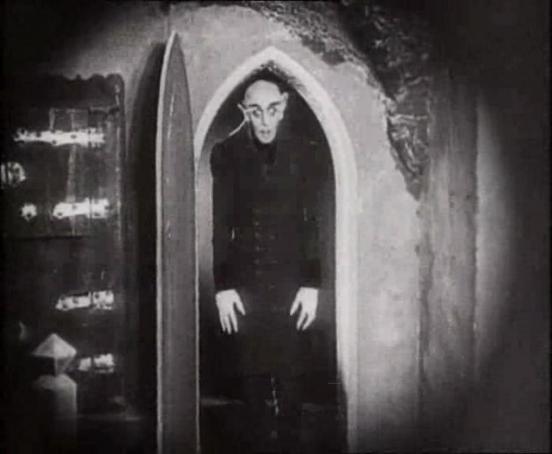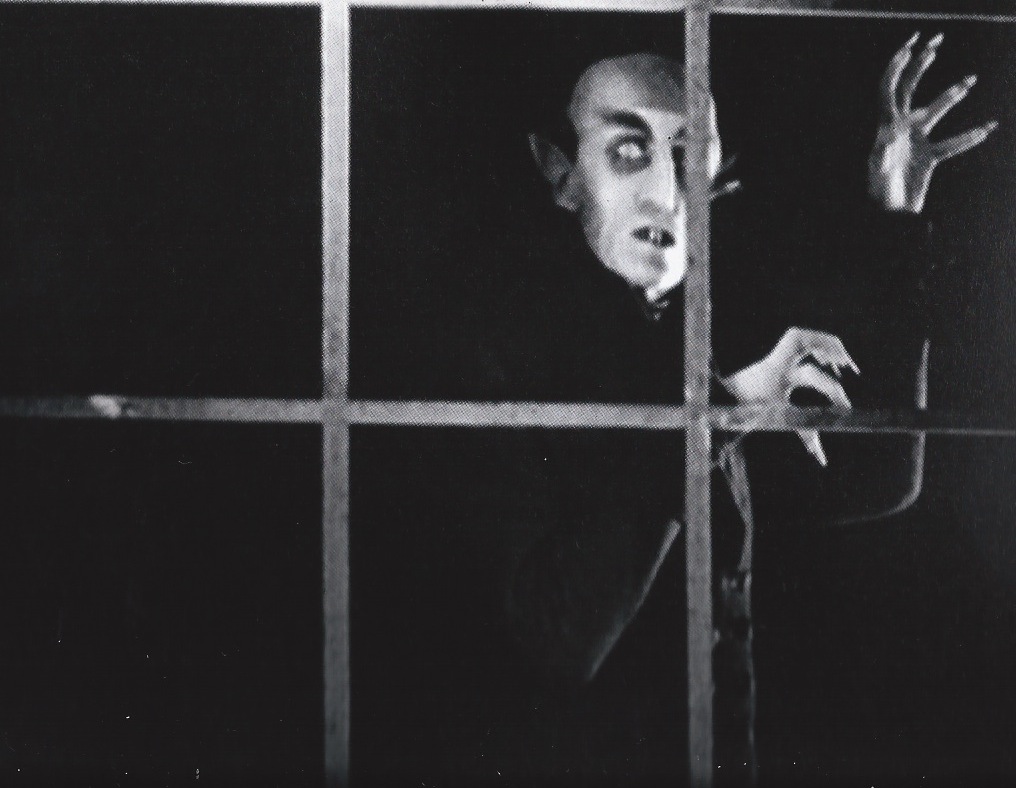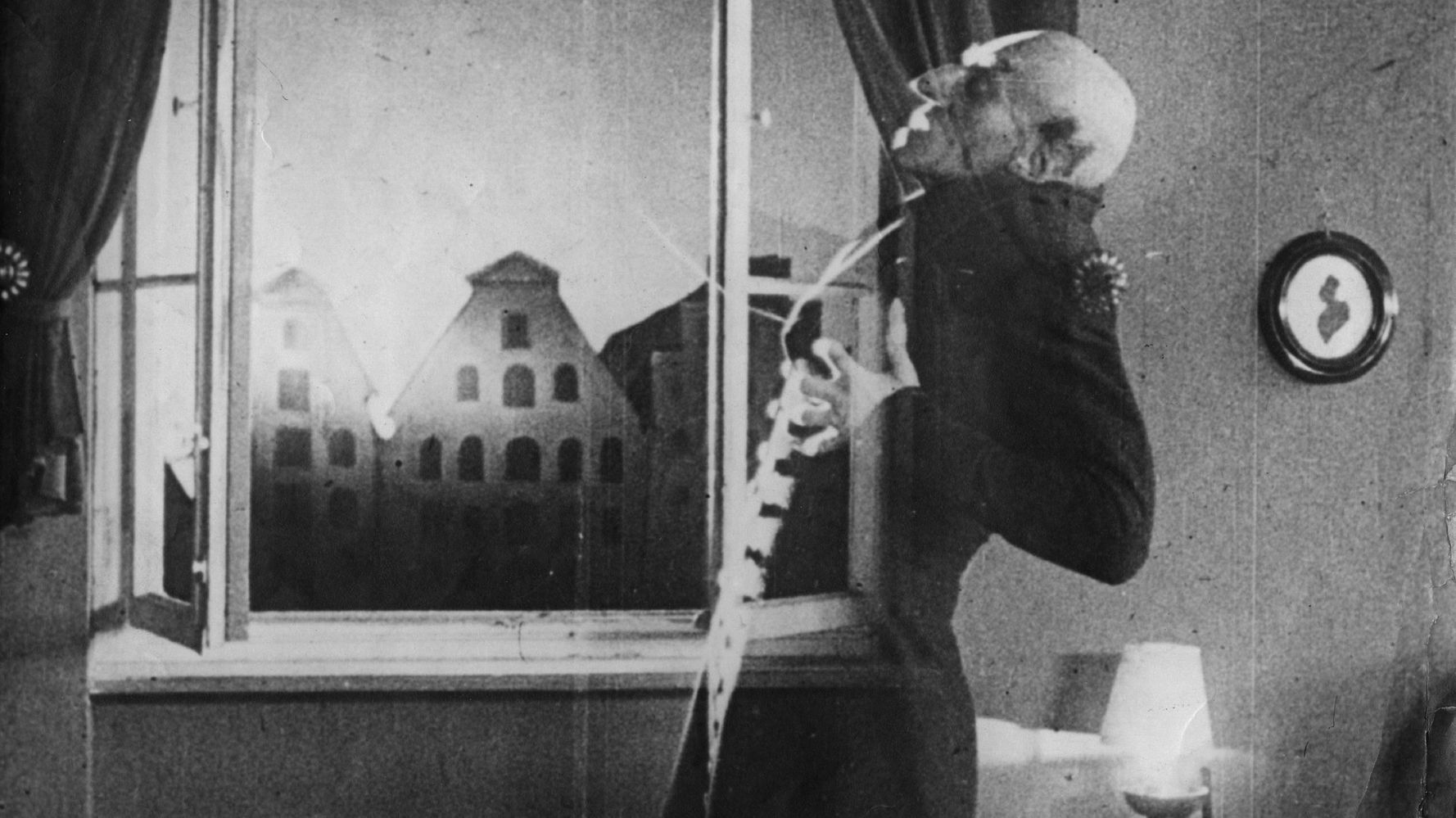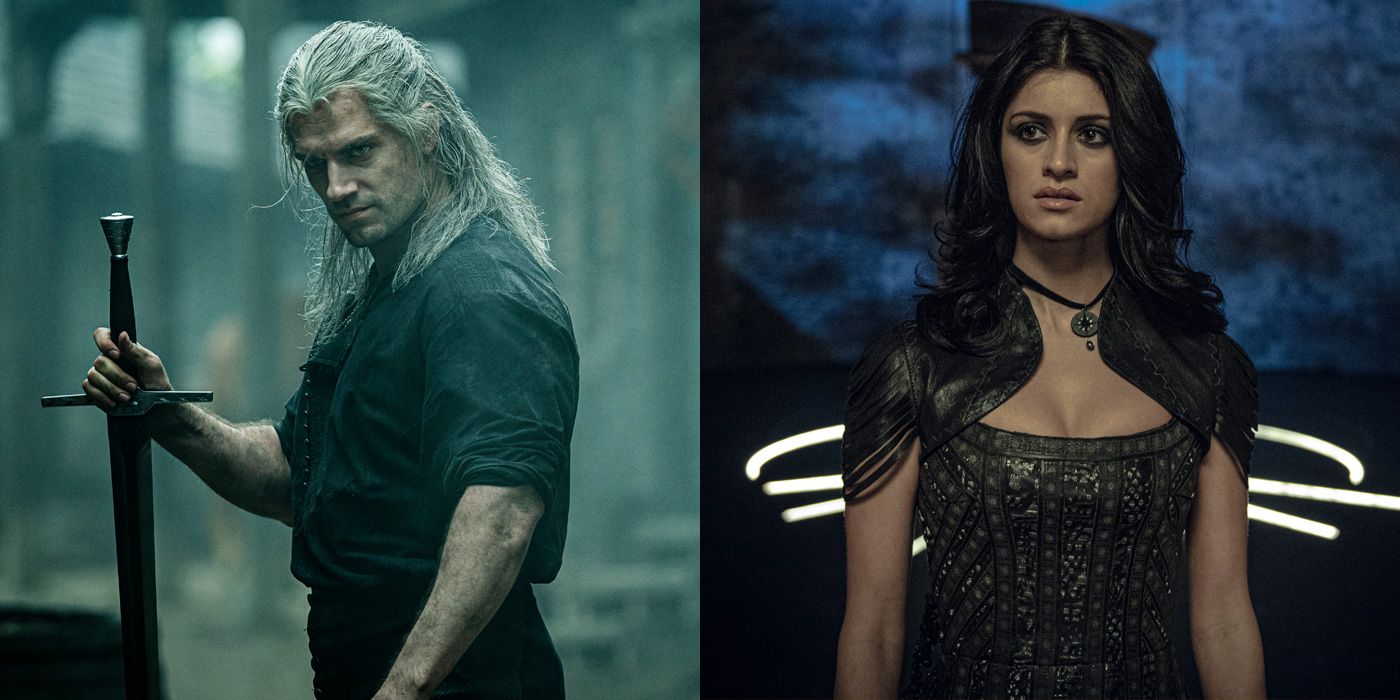Taking a look at the Dracula film which isn’t about Dracula…
In the spirit of Halloween, I thought it would be fun to take a look at one of my favourite classic horror films. My first exposure to Nosferatu: A Symphony of Horror was at an open day for a local college (for the non-UK readers, I mean the two-year college that comes between regular school and university). I wandered into a film class presentation while taking a look at the campus, and on the projector was a truly chilling image. On a silent screen accompanied only by eerie music, a young man hid in his bed. Through a castle door, a creature glided along a corridor towards the viewer. It was a strange bald man, with long fingers and wide, piercing eyes. Those eyes stared through the screen straight at me, and I was mesmerised. It was such a striking image that even though I didn’t have time to stay and watch the rest, the film stuck with me. I asked the teacher what it was called and eventually tracked it down so that I could watch the entire thing.

Since studying at film school I’ve learnt much more about Nosferatu and the genre it belongs to, but even before that I considered it an amazing piece of early horror. I never expected to find a silent film from the 20’s particularly scary, but it turns out the right imagery can leave an impact without the need for dialogue or sound effects. Nosferatu is a German expressionist film, which means it is part of a genre of early films made in Germany that rely on heavy contrast and shadow to create striking images and fantastical stories. These films usually focus on symbolism and are usually heavily stylised. The style lends itself well to a certain style of horror. While Nosferatu isn’t particularly gory or suspenseful, especially to a modern audience, it does leave a huge impact. Many of the shots are bold, and between the excellent makeup and heavy shadow, as well some interesting locations, each frame seems to stay with me long after I watch it.

The film has an unusual history. The director, F. W. Murnau wanted to shoot an adaptation of Bram Stoker’s book Dracula. However, Stoker’s widow wouldn’t sell him the rights and so he simply altered the plot slightly and renamed all of the characters. As such Count Dracula became Count Orlok, and Johnathon Harker became Thomas Hutter. If you have watched any film versions of Dracula and/or read the book, the similarities are easy to spot. Stoker’s estate still noticed the film and didn’t think the changes were enough, so after a legal battle most of the copies of the film were destroyed. The only reason this film has become such an influence is thanks to a few copies surviving and making their way to the USA in 1929. Personally, I’m very glad that someone saved the film. It might be copyright infringement but it is nonetheless a damn good silent film.
The cinematography is not as surreal as other expressionist films like The Cabinet of Dr Caligari, but the emphasis on shadow and contrast leads to some excellent gothic imagery of castles, empty towns and dark corridors. Murnau seems to want to make the scene around Orlok seem normal and comforting; shots of nature and comfortable houses. This creates greater horror when we are taken to the castle, filled by clocks with skeletons and other strange architecture. The makeup for Count Orlok is brilliant. The strange tufts of hair, the pointed ears and teeth and the heavy eyeshadow all frame a strange face that is downright unsettling to look at for too long. Max Schreck, the actor playing Orlok has amazing eyes that seem to be tailor made for this kind of role. He stares unblinking and often seem to hold other characters spellbound. If you wanted to argue that the film is not a rip off of the book, the character of Orlok is where you could make your case. Unlike the intelligent aristocrat of the book, who looked mostly human with a few strange differences, Orlok is a monster. He looks like some kind of hellish rat who never takes off his clothes. His character is a leering sadist who spreads like a plague to Hutter’s home town to give his curse to his wife. Schreck is fantastic in the role. His expressions seem almost inhuman, twisted in hatred or hunger. If there is one plot hole in the film, it’s the fact that Thomas Hutter doesn’t run the hell away the second he sees the Count for the first time.

The film is hugely influential, having several remakes and reimagining over the years, including one directed by Werner Herzog and a fun meta horror starring Willem Dafoe. It demonstrates how important stylised and gothic imagery would be to many films in the horror genre and in particular, vampire movies. The film created a creeping tone and unnerving atmosphere in a way that no other medium could achieve. Apart from the style and genre, Nosferatu would also have an enduring legacy in vampire fiction. Before this film, vampires could go out in the sunlight without dying. Dracula himself had no issue walking down the street on a sunny afternoon, albeit without his powers. After Nosferatu ended with the Count being destroyed by the light of dawn, most vampire fiction, including future adaptations of Dracula would make sunlight the vampires most potent weakness. I think that tells you just how inspiring this film has been over the years.

This strange silent film is a testament to visual storytelling. It has survived through the years because the imagery it presents is striking and refuses to be forgotten in a hurry. Thanks to a superb performance from a character actor, unnerving makeup, strong emphasis on lighting and an eye for unsettling scenes, Nosferatu is a unique experience to watch. If you’ve had enough of vampire films that lean into the sexy image that has become so prevalent then I have just the film for you. You definitively shouldn’t find Orlok sexy, although I won’t judge if you do (I will). Happy Halloween everyone!


/cdn.vox-cdn.com/uploads/chorus_image/image/66013389/TheWitcher_101_Unit_08529_RT.pkej748hf.0.jpg)
